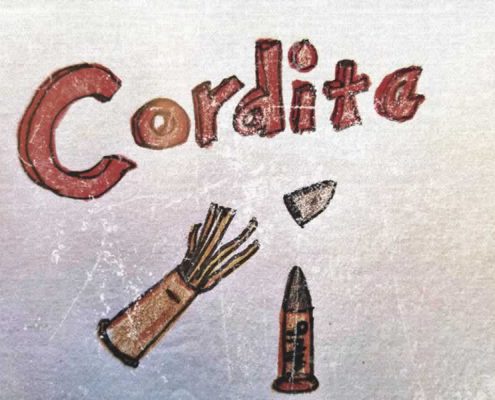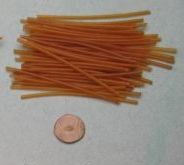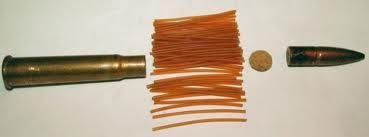“The second I opened the door I knew she was dead. Her body was easy to find, too. The smell of cordite led me to her like the combined scents of fried chicken and potato salad lead a southerner to a summertime church picnic.”

Yes, it’s happened yet again. I read a book last week by one of my favorite authors. It was one of those books you just don’t want to put down, not even to eat or sleep. Well, I had plowed my way almost to the end when I saw the dreaded “C” word. I know, disgusting, right?
Yep. The modern day hero smelled CORDITE. Right there on page so and so. And for all the world to see.
ARGGHHH!!!! If I read that more time I think I’ll shoot myself just before hurling my wounded body in front of a speeding train.
Cordite. What is it, and why do so many writers use the stuff in their books? I can’t answer the second part of the question. It’s still a mystery to me.
Goodness knows, I’ve tried to steer everyone in the right direction. Authors don’t write about cops using sharpened sticks as weapons. They don’t have their heroes carrying a pocket full of  rocks to throw at bad guys. Why not? Because times have changed. We aren’t living with the Flintstones. Fred and Barney aren’t our neighbors. We have modern weapons, vehicles, and modern ammunition.
rocks to throw at bad guys. Why not? Because times have changed. We aren’t living with the Flintstones. Fred and Barney aren’t our neighbors. We have modern weapons, vehicles, and modern ammunition.
Cordite is gone, folks. Finished. Over. Done. They just don’t make the stuff anymore. It is G.O.N.E.
Actually …
Cordite was developed by the British in the 1800’s. Their scientists blended a concoction of acetone, nitrocellulose, nitroglycerin, and petroleum jelly to form a colloid (a substance is dispersed evenly throughout another). The acetone was then evaporated which allowed the goop to be extruded into long, sort of slippery, spaghetti-like cords (see image below). These rods were packed into rounds, standing on their ends, topped with a round piece of cardboard. Depending on the size of the weapon and caliber of ammunition, the cords could be manufactured in thicker or thinner sizes, as well as longer or shorter lengths. In other words, the bigger the round the fatter and longer the strands of cordite.
This stuff is not a powder! It’s basically sticks of nitroglycerin and guncotton lathered up with Vaseline.
Cordite rods and a piece of round cardboard.
Left to right – casing, cordite rods, cardboard disc on top, and bullet.
Cordite was manufactured in sticks. Therefore, it could not be used in tapered rounds. The shell tube had to remain straight until it reached the point where the bullet fit into the neck. A series of dies were used to make that transformation. The cordite had to be packed tightly into each round. If not, air space caused the cordite to burn at an improper rate.
Now, the most important fact in this entire piece.
Cordite manufacturing CEASED somewhere around the end of WWII. I’ll say that again in case you weren’t listening, or in the event the radio was playing too loudly and caused you to miss it.
They don’t make the stuff anymore. It’s not used in modern ammunition. Nope. Not there. Don’t have it.
So no, your cops can’t smell it! That’s not what’s hitting their noses when they enter a crime scene.

When writing these scenes think 4th of July fireworks, after they’ve exploded. That’s pretty close to the odor floating about in the air after modern ammunition has been recently discharged.




